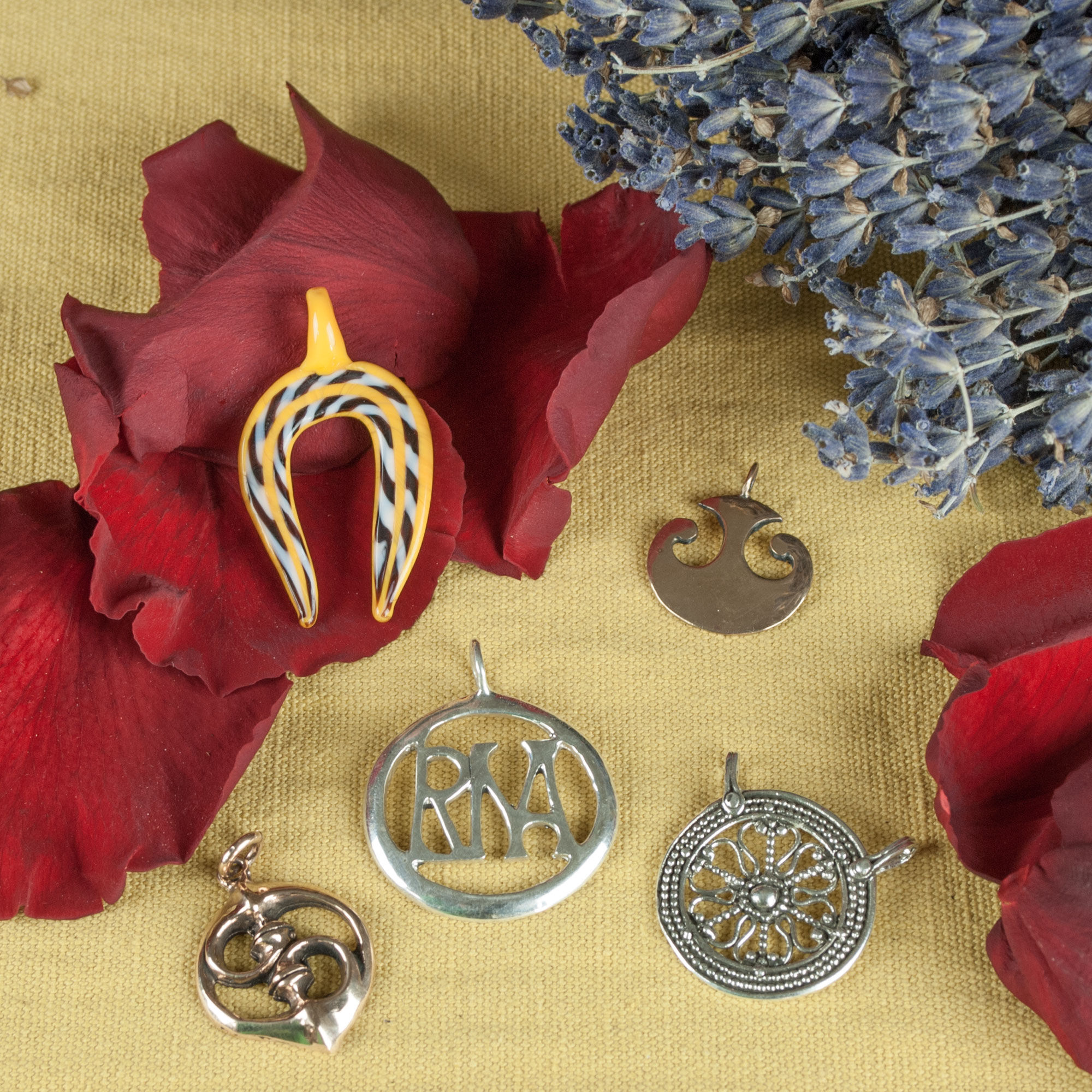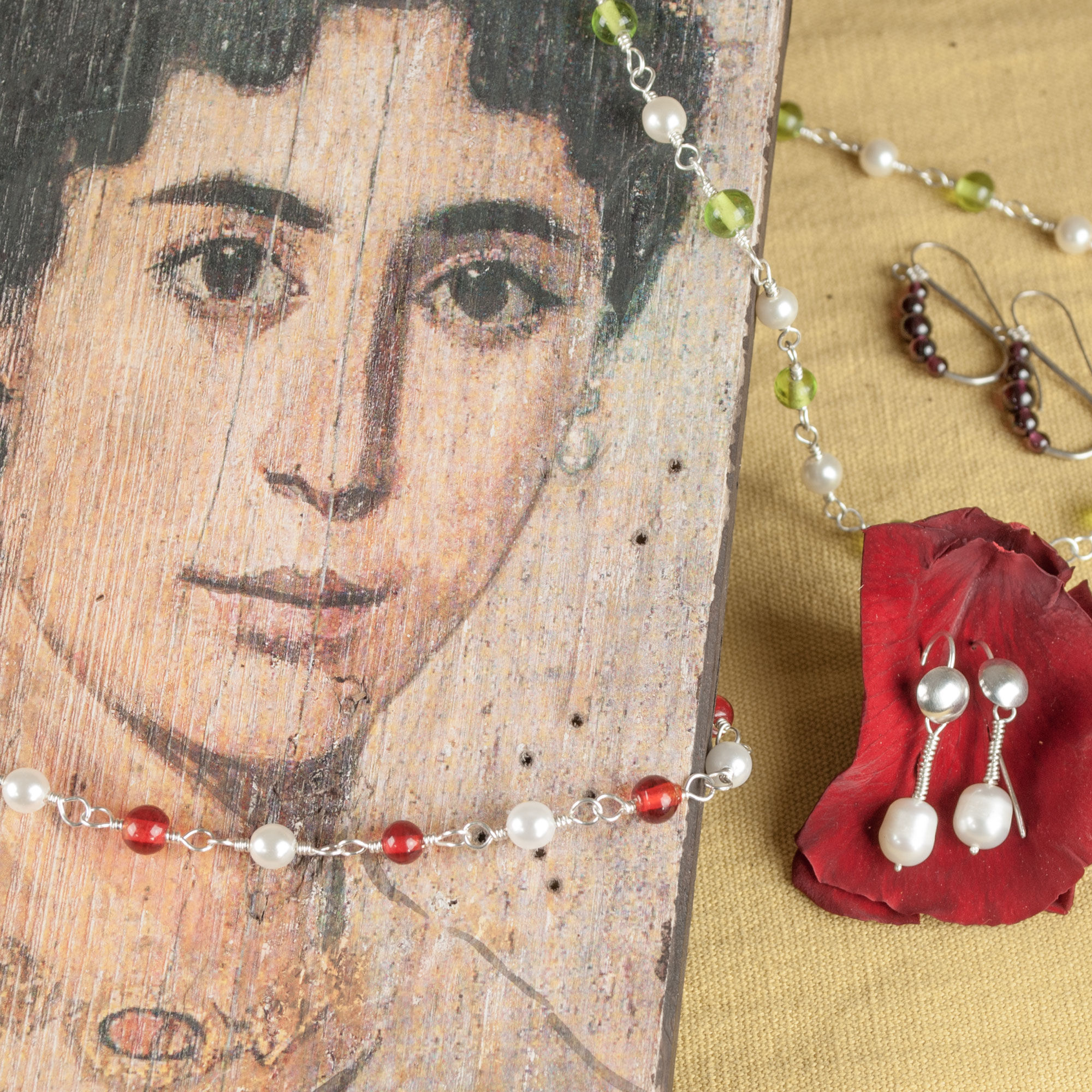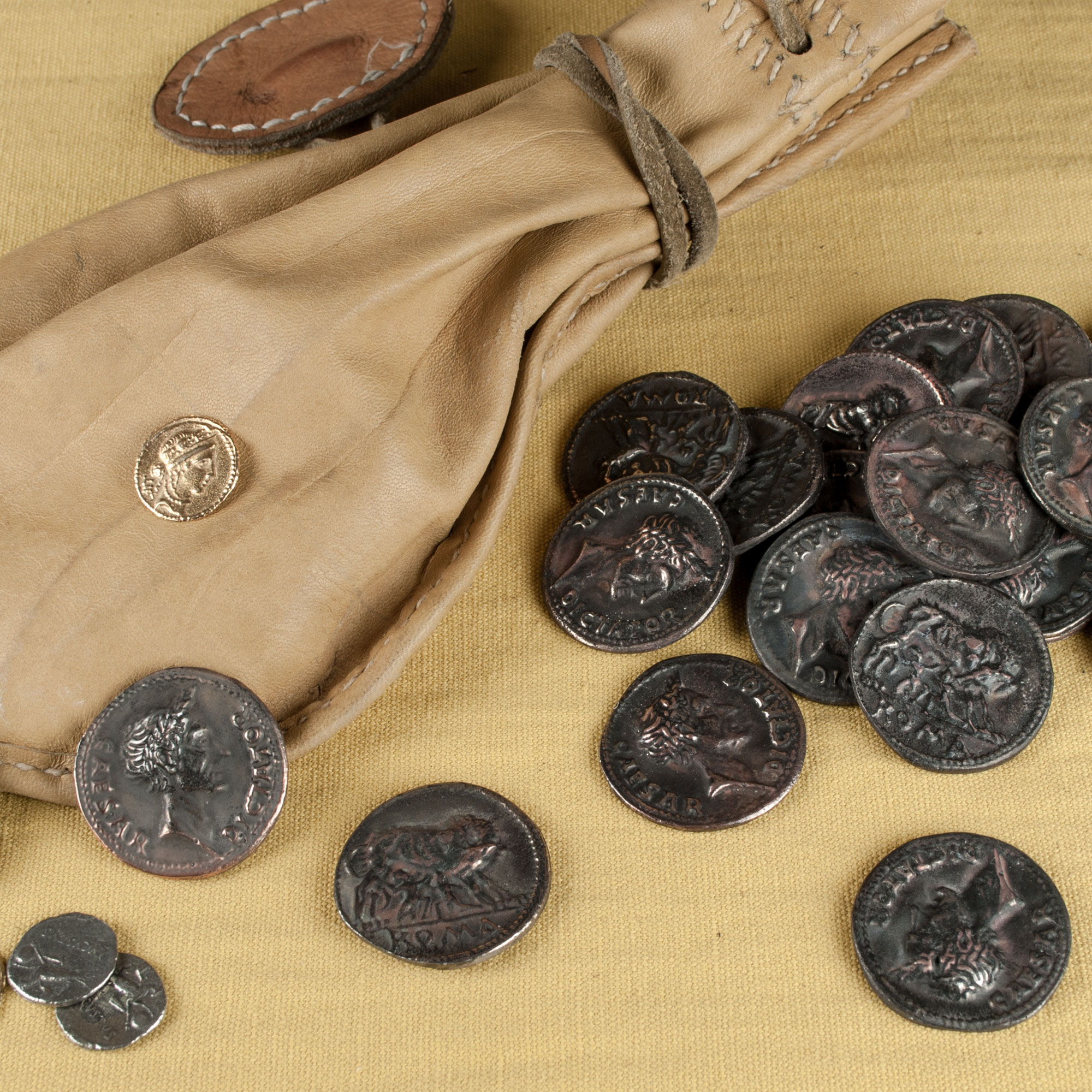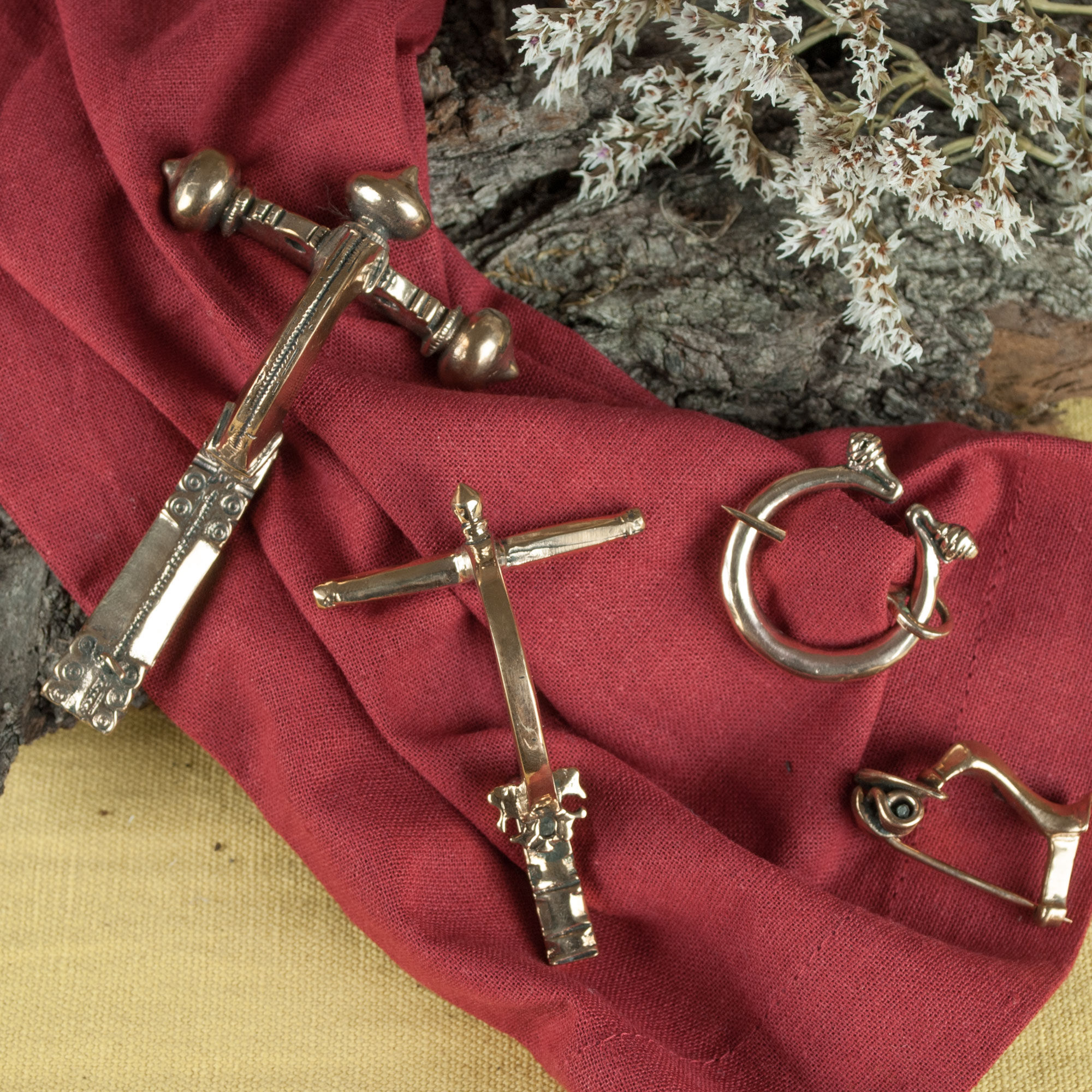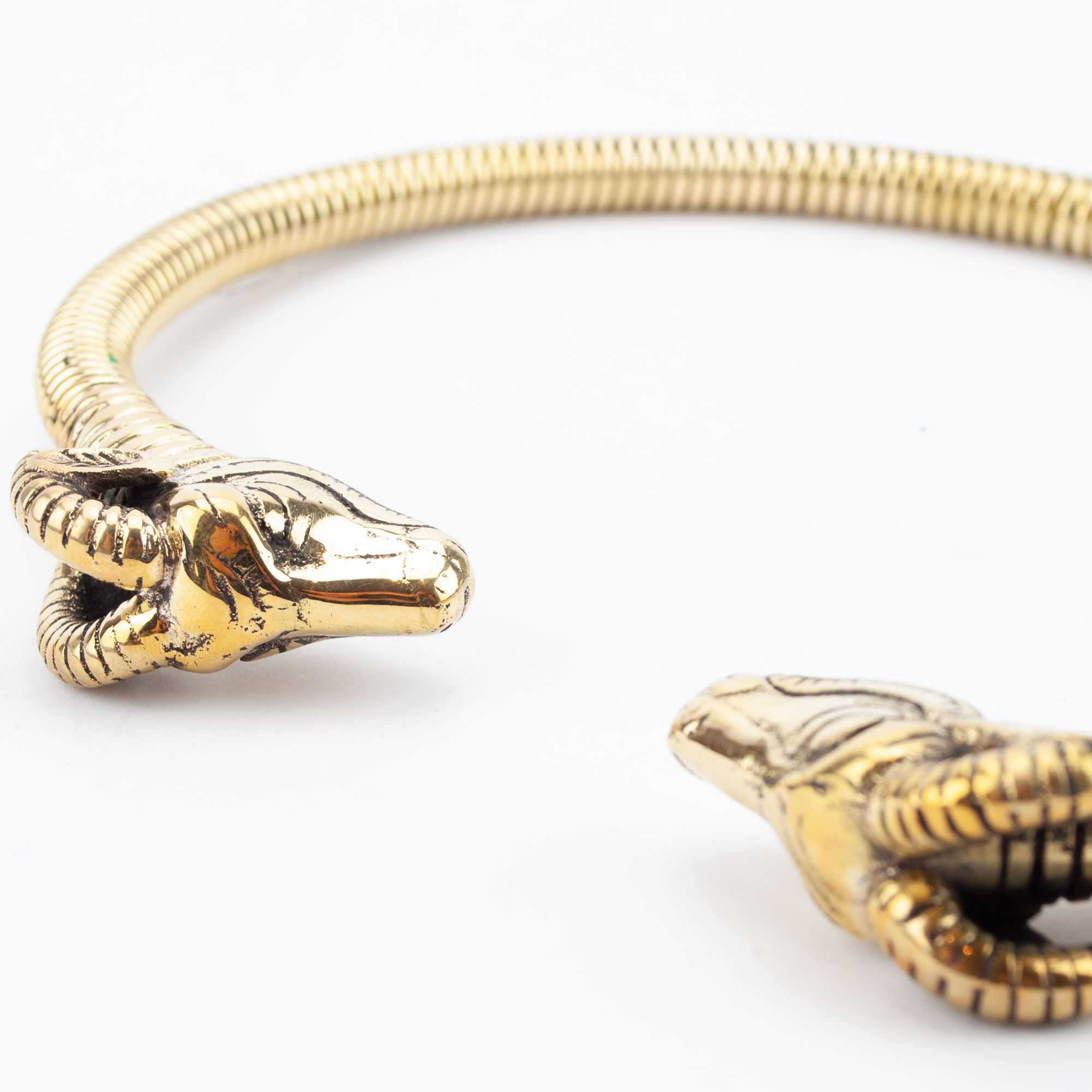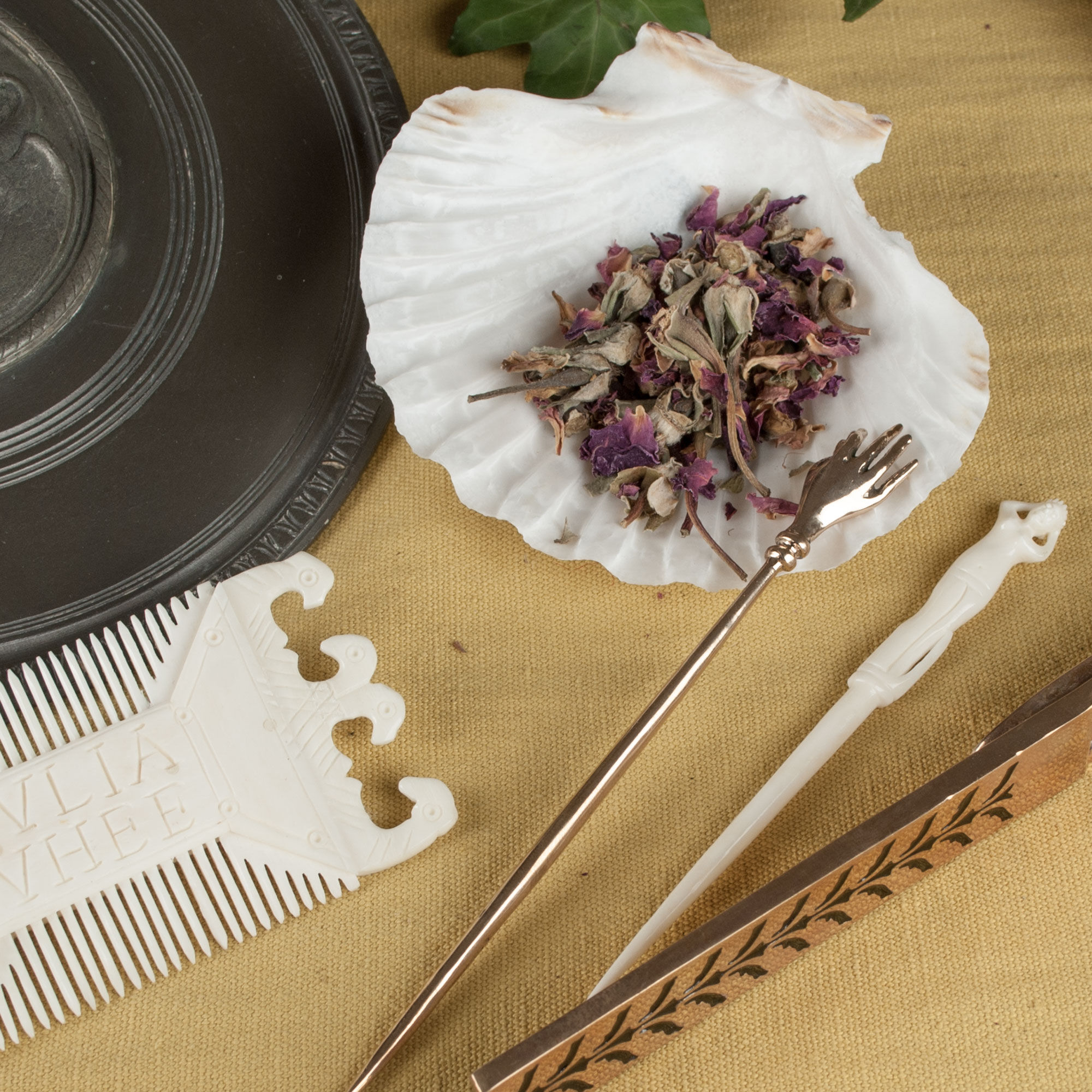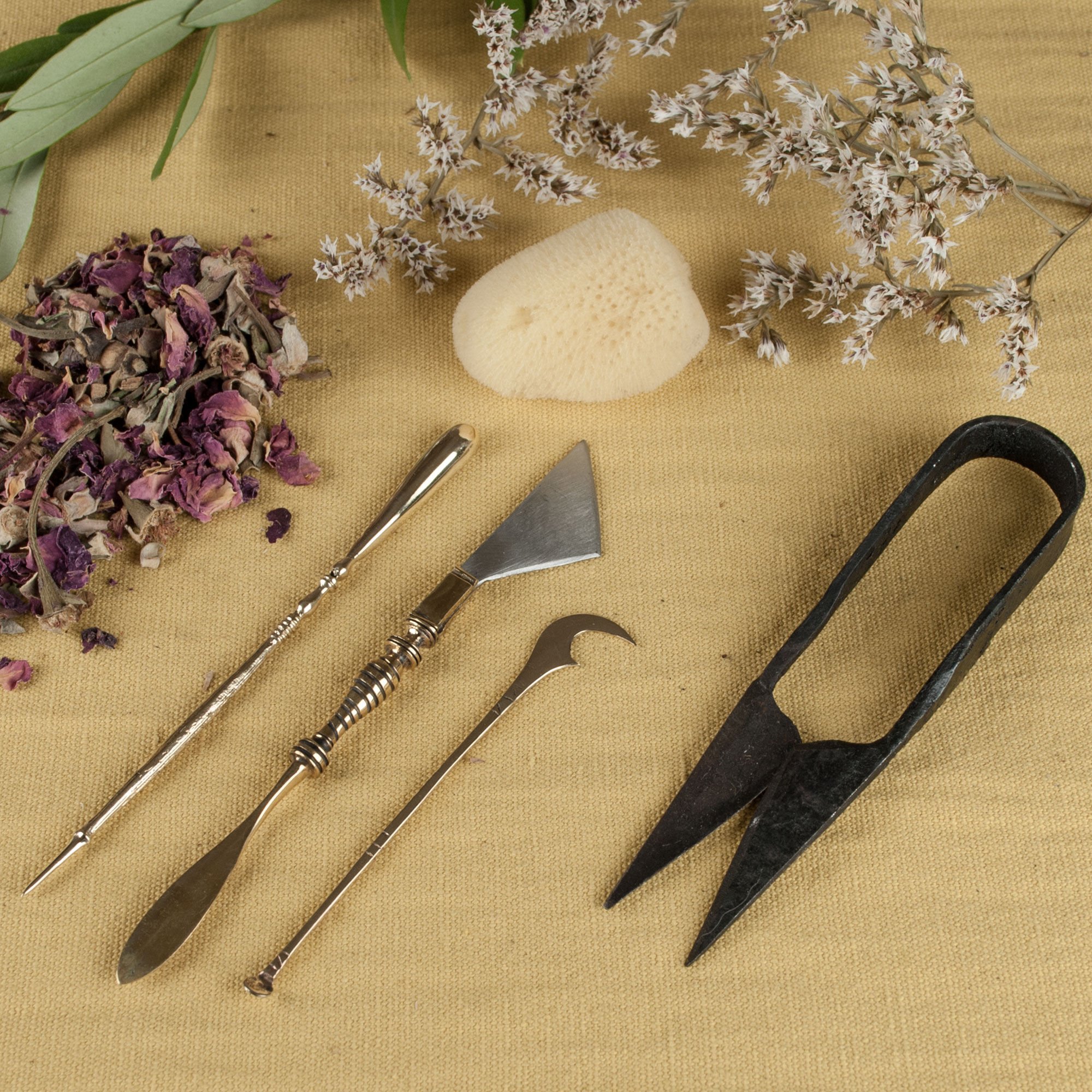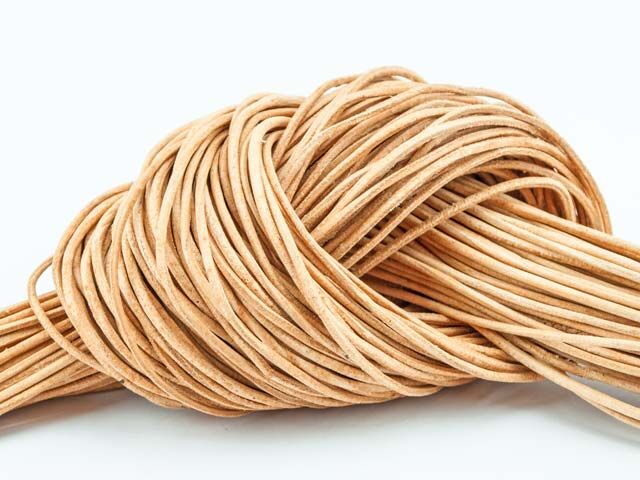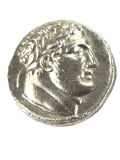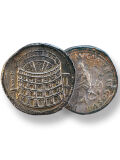Roman jewellery
Roman jewellery from the past
Antique jewellery for him and her.
Roman Jewellery
From pendants in gold, silver or bronze to filigree necklaces and classic earrings.
Gemstone and glass bead necklaces, brooches or rings, the Romans loved to adorn themselves with fine ornaments, good luck charms and precious jewellery. The jewellery pages of the Roman Shop offer a wealth of handcrafted jewellery, now made in Germany from original finds. A Roman jewellery treasure chest holds what once adorned ancient necks, arms and hands, ears and hairstyles.
Melting gold
Jewellery has a long tradition: as early as 2500-500 BC, Minoan craftsmen were making earrings, bracelets and necklaces. In the Classical period, chains, thin spirals of braided wire, petals and rosette-shaped metal leaves were in vogue as ornaments. A popular goldsmithing technique in antiquity was gold granulation. Tiny gold beads were laid out to form an ornament or surface and soldered onto a gold base. The gold pieces were then joined together only at the points of contact. The effect of light and shadow is very vivid and artistic. Etruscan granulation became world famous. Filigree work was also very popular with the Romans. These were ornaments, jewellery and artistic objects made of fine gold, silver, silver-plated copper and iron wires, bent and soldered together in various ways, usually depicting foliage, arabesques and the like. Roman and Florentine filigree is still highly prized today.
Decorated with coins
Roman jewellery with inlaid stones was rare in antiquity. The dominant motifs on Roman jewellery were spirals, naturalistic patterns, octopuses, starfish or butterflies. Coins were also popular. Finds show jewellery with small gold discs and diadems made of long oval plates set with rosettes. From the 3rd century AD, the Romans also wore necklaces and bracelets decorated with gold coins.
Each piece is unique
Based on Roman jewellery, the decorative treasures are handcrafted in Germany using the lost-wax technique (as used in metal and glass casting). Each piece is therefore unique! The shapes do not exist. Just like in Roman times, the pieces of jewellery are created - from the modelled wax pattern to the metal casting, which is poured from metal heated to 1300 degrees. The treasure chest is just a click away:
A voyage of discovery through the beauty of ancient Roman jewellery!
Here again all categories in the antique jewellery section:
Schools and authorities in DE can conveniently order on account. Private customers are welcome to use Ratepay purchase on account (Paypal service)
Safe and easy ordering within Germany from 75 €
Always new ideas and optimised products through our years of experience and intensive cooperation with schools and museums.
